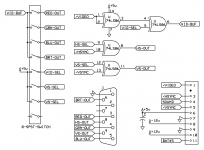Haven't caught up on the thread yet but here are my thoughts in regards to the first post:
1 & 2. Yes please

4, 5 & 9. Mostly tidying up other people's work, which if that interests you, sure, but as you say, they're mostly done already.
7. Would be a boon to many of us and promote further hacking
8. Don't really see the benefit @20Mz. The SE already runs at 16MHz if someone wants a slightly faster 68000 Mac.
On the other hand there are FPGA softcore binary-compatible 68000s (ie, actual 6800s, not 020/030 etc) that can run at much higher clock rates, like, IIRC, 150MHz ish. Building one of those onto an plug-in 40 pin DIP module with suitable cache and glue logic could be interesting.
10. Again, bbraun has been working on this.
If I might add a slightly off the wall suggestion of my own:
Now that you have µcLinux working on 68Katy - port it to a 68000 Mac



